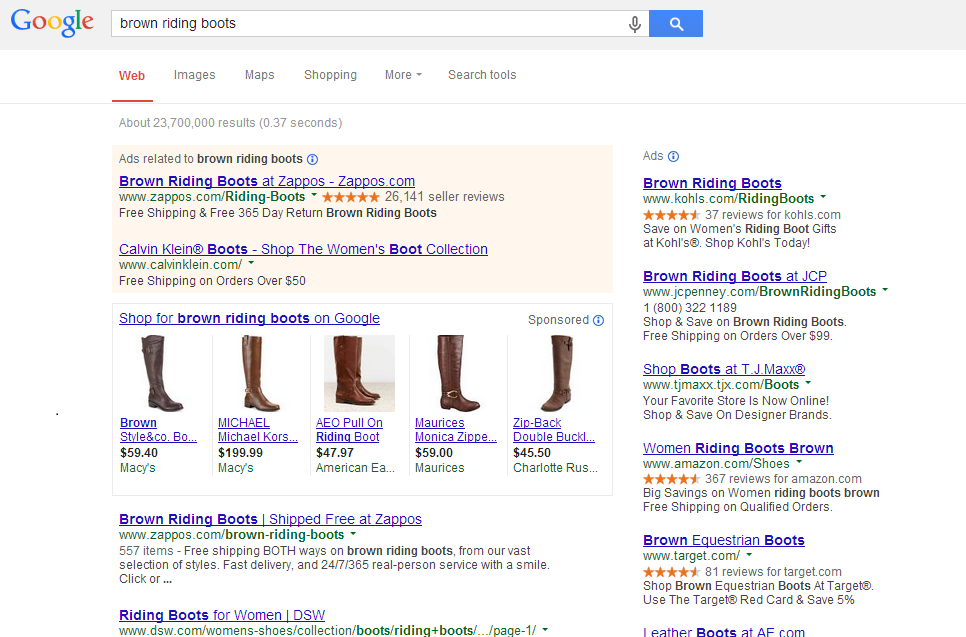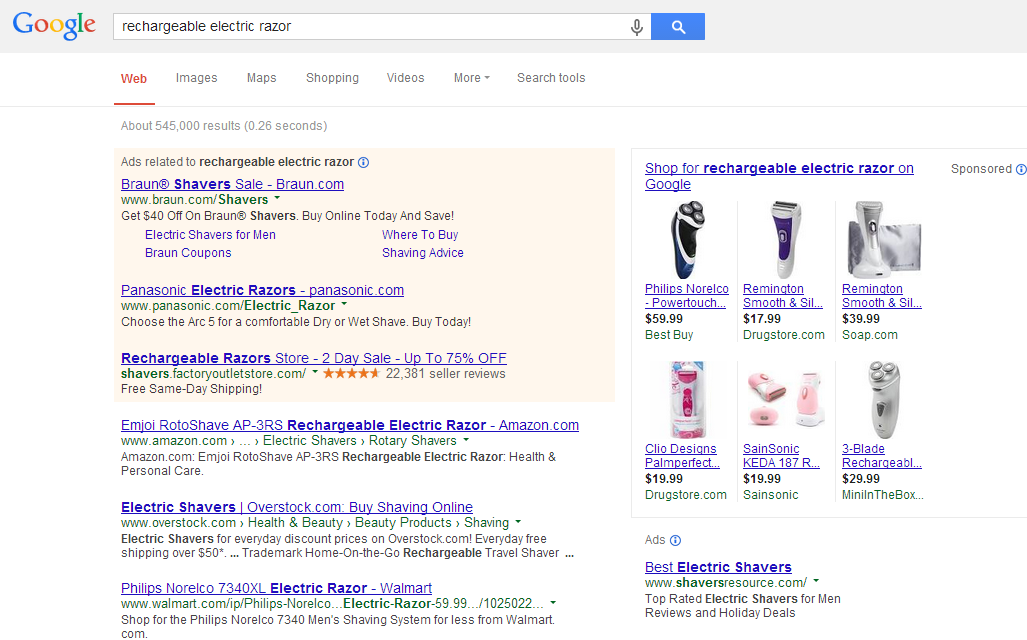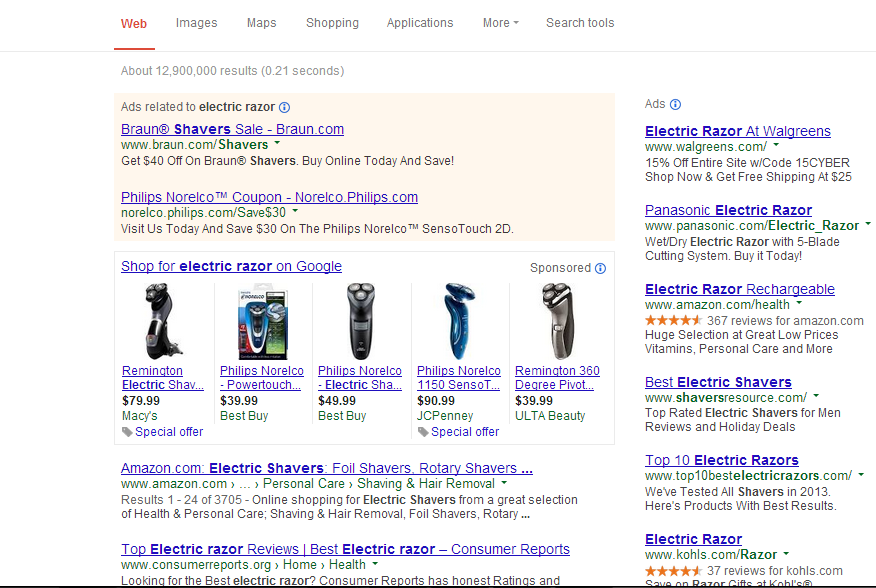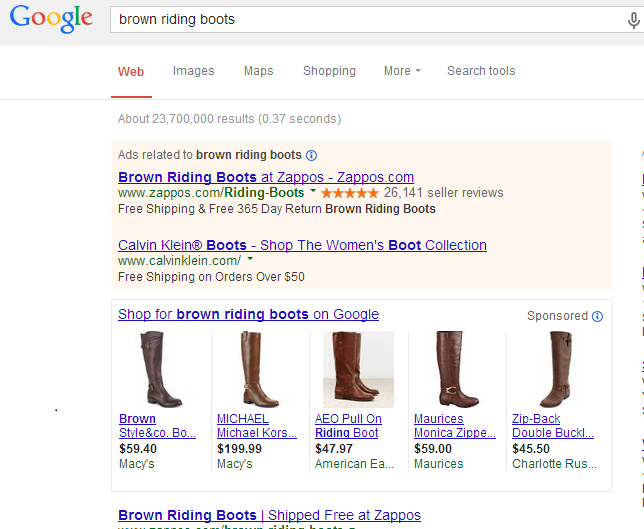In recent months, the search marketing community scrutinized Google because it seemed to be going back on its word to serve organic content first and foremost, keeping paid ads to the side. Now, the search engine is experimenting with a new display that could potentially give sponsored content even more visibility at the top of search results. If these changes stick, marketers may need to become increasingly competitive with their SEO and content strategies to get the same exposure in results pages.
Paid ads take up more SERP space
The Search Engine Journal’s Bryant Garvin recently reported on a couple of noticeable changes to Google SERPs, including a new way to identify paid ads and sponsored product pictures above the fold.
Paid ads have traditionally been displayed in front of a light-orangish/pink background to denote that they are separate from organic search results. They’re now being shown against a white background with a small orange-colored “Ad” label next to URLs. It seems the update is still being rolled out because a series of searches Brafton performed generated results with the standard orange-background display.
Paid product images step into the spotlight

The other change, which brings sponsored product images to the top of SERPs, seems to be moving faster toward ubiquity. A search for “brown riding boots” provides a page with paid content at the top, featuring a box underneath containing product images and prices (from various vendors) that’s labeled as sponsored. It’s underneath these elements that organic results are shown, and there’s only room for one above the fold. Internet users must scroll down to push the paid content at the top out of sight.
Are specific and general searches treated the same?

Upon further investigation, it seems Google is being somewhat discretionary about where the new sponsored content display is applied. A search for “electronic razors” generates a SERP with the paid product display box, while a more refined query for “rechargeable electronic razors” is answered with a traditional results page sans the featured items.
The variance in these results could be due search specificity, and it may take time for Google to change the way it displays content for longer keywords. Or, it could indicate the search engine won’t use the new format for queries that aren’t as competitive.

It’s also important to consider how these changes affect brands targeting different audiences. B2C marketers may be impacted more significantly than B2Bs. The new paid content look affects both groups equally, but Google isn’t yet featuring business-facing products or services in sponsored boxes at the top of SERPs. Queries for “content marketing” and “Electronic health record solutions” both yielded a page without these updated elements.
Unless Google amends its display policies further (and makes these changes permanent), B2C marketers may face an increasingly competitive search landscape. One way to stay a step ahead of competitors is to outbid brands on product keywords and secure a position in sponsored boxes. Or they can build strong ranking signals and optimize their web content so that it naturally outperforms others in their space and earns those prime positions in results pages.





